Are you curious about the location of the famous paradise known as Boracay? Wondering which province holds this gem of an island? Prepare to satisfy your curiosity as we delve into the province that encompasses the breathtaking beauty of Boracay!
Key Takeaways:
- Boracay is situated in the province of Aklan in the Western Visayas region of the Philippines.
- Aklan is renowned for its pristine white sand beaches and is the home of the world-famous resort island, Boracay.
- Boracay is located on the northwest portion of Panay Island, facing the Sibuyan Sea.
- The province of Aklan is bordered by the provinces of Antique and Capiz, adding to the natural charm of the region.
A Brief History of Boracay
Before becoming a popular tourist destination, Boracay had a rich history dating back to its indigenous inhabitants, the Ati people. The Ati people lived in harmony with the land, relying on fishing and farming crops for sustenance. The island first gained attention in the 1970s when it captured the imagination of backpackers from Europe and Australia, who were drawn to its pristine beaches and crystal-clear waters.
As word spread about the natural beauty of Boracay, it started to attract more visitors from around the world. The island’s reputation soared when it was featured in movies and travel guides, solidifying its position as a must-visit destination. Today, Boracay is recognized for its vibrant culture, diverse marine life, and breathtaking landscapes.
“Boracay is more than just a tropical paradise. It has a captivating history that adds to its allure and charm.”
The development of Boracay has been a journey, with the island evolving from a hidden gem to a world-renowned travel hotspot. Its history pays tribute to its roots while embracing the progress that has made it a beloved destination for millions of travelers.
To truly appreciate the beauty of Boracay, it’s essential to understand its history and the heritage that shaped it into what it is today.
The Transformation of Boracay
In 2018, Boracay underwent a major transformation due to environmental concerns and overtourism. President Rodrigo Duterte declared the island a “cesspool” and ordered its closure from April to October of that year. During the closure, extensive cleanup and rehabilitation efforts were carried out to address the challenges plaguing the island.
Illegal structures were demolished to restore the natural beauty of Boracay, allowing the island’s pristine beaches to shine once again. The sewer systems were upgraded and improved, reducing the pollution that previously affected the waters surrounding the island.
“Boracay had turned into a cesspool. There will be a time that no more foreigners will go there because if it’s not clean, it’s not conducive to swimming.”
Moreover, the closure of Boracay provided an opportunity to promote sustainable tourism practices. Various measures were implemented to regulate visitor activities and preserve the island’s natural resources. The rehabilitation efforts focused on creating a balance between tourism development and the preservation of Boracay’s ecological integrity.
The closure and cleanup of Boracay were not without consequences. The temporary closure had a significant impact on the local economy, particularly for the thousands of residents and workers who depend on tourism for their livelihood. However, it was a necessary step to ensure the long-term sustainability of the island’s tourism industry and protect the natural wonders that draw visitors from around the world.
Results of the Rehabilitation
The rehabilitation efforts in Boracay have achieved remarkable results. The once overcrowded and polluted beaches of Boracay have been revitalized, offering visitors pristine shorelines and crystal-clear waters. The transformation has brought about a new era of sustainable tourism, with regulations in place to control visitor numbers and protect the environment.
The rehabilitation of Boracay not only restored its natural beauty but also led to the recognition of its efforts on a global scale. In 2019, Boracay topped the list of the Best Island in Asia in the Condé Nast Traveler’s Readers’ Choice Awards. This accolade highlights the success of the island’s rehabilitation and its commitment to providing a high-quality and environmentally conscious tourism experience.
Key Achievements of Boracay’s Rehabilitation
| Area | Achievements |
|---|---|
| Beaches and Coastlines | Cleaner and more pristine, with better water quality |
| Infrastructure | Upgraded sewer systems and demolition of illegal structures |
| Regulation of Visitor Activities | Implementation of sustainable tourism practices and visitor control measures |
| Recognition | Named the Best Island in Asia in the Condé Nast Traveler’s Readers’ Choice Awards |
Boracay Before and After the Rehabilitation
Before the rehabilitation, Boracay’s main White Beach was a bustling hub of activity, with tourists flocking to its shores and vendors selling their wares. However, this popularity came at a cost. The beach was crowded with beach beds, and the water was polluted due to boat oil and sewage.
After the closure and cleanup, the transformation of Boracay was remarkable. The beach and water quality significantly improved, and the efforts to rehabilitate the island were successful in restoring its natural beauty.
The rehabilitation of Boracay involved various measures to ensure the sustainability of the island. The number of visitors and commercial activities were regulated and monitored to avoid overcrowding and preserve the environment. This allowed for a more controlled and environmentally conscious tourist experience.
“The rehabilitation of Boracay has transformed the island into a more sustainable and eco-friendly destination,” says Maria Santos, a local resident. “We now have cleaner beaches, clearer waters, and a renewed focus on preserving our natural resources for future generations.”
The improvements made to Boracay’s environment have had a positive impact on both locals and tourists. The beach is now more enjoyable and appealing, with its pristine white sand and crystal-clear waters becoming a sight to behold. Tourists can now relax and swim in the rejuvenated beach, knowing that the island’s natural beauty is being protected and preserved.
“The rehabilitation efforts have truly transformed Boracay,” says James Thompson, a tourist from Australia. “I visited the island before the cleanup, and the difference is astounding. It’s great to see that the beauty of Boracay has been restored and that it is being cared for.”
The rehabilitation of Boracay has not only improved the aesthetics of the island but also helped in creating a more sustainable and responsible tourism industry. The regulations put in place ensure that the long-term environmental impact is minimized, allowing Boracay to thrive as a world-class destination while preserving its natural resources.
Boracay’s Impact on the Local Community
Boracay Island, with its picturesque beaches and thriving tourism industry, had a profound impact on the local community, comprising approximately 26,000 Boracay Island residents and numerous individuals who commute daily to work on the island. The closure of the island for rehabilitation left a significant mark on the economy and livelihoods of the locals, who heavily depend on the tourism sector for their income.
The population of Boracay Island mainly consists of individuals who directly or indirectly rely on the tourism industry for employment opportunities. Local residents work in various sectors, such as accommodations, restaurants, and recreational activities, catering to the needs of the visitors. Before the closure, the bustling island attracted a large number of tourists, generating revenue and offering employment to the locals.
The closure impacted the local economy, leading to reduced job opportunities and income for boracay island residents.
The rehabilitation efforts implemented on Boracay Island aimed to foster a more sustainable and inclusive economy. The government’s focus shifted towards preserving the natural beauty and resources of the island, while simultaneously ensuring the well-being of both tourists and residents.
While the closure had short-term negative consequences for the locals, the long-term goal was to create a boracay island economy that is less reliant on mass tourism and more focused on sustainable practices. The government introduced measures to regulate the number of visitors, improve environmental standards, and promote responsible tourism. These efforts were intended to safeguard the island’s delicate ecosystem and cultural heritage while providing a better quality of life for the local community.
Economic Diversification and Community Development
The rehabilitation process also paved the way for economic diversification and community development. The government promoted alternative livelihood programs and skills training for the locals, encouraging them to explore new industries beyond the tourism sector. This approach aimed to reduce dependency on a single industry and create a more resilient and thriving local economy.
Moreover, the rehabilitation efforts emphasized community engagement and empowerment. Local residents were involved in the decision-making process and were encouraged to actively participate in shaping the future of Boracay Island. The focus shifted from an exclusive emphasis on tourism to ensuring the overall well-being and prosperity of the local community.
The rehabilitation of Boracay Island sought to create a more sustainable and inclusive boracay island population, fostering economic diversification and community development.
The image above captures the resilience and strength of the Boracay Island community. Despite the challenges posed by the closure and rehabilitation, the local residents remain dedicated to preserving their home and working towards a brighter future.
Aklan – The Province of Boracay
Boracay, the world-famous resort island, is nestled within the province of Aklan in the Western Visayas region of the Philippines. Aklan, known as the oldest province in the Philippines, covers an area of 1,821.42 square kilometers and is home to several municipalities, including the capital city of Kalibo.
Aklan is not just about the allure of Boracay; it presents a myriad of attractions and experiences for visitors to explore. One of the province’s highlights is the Ati-Atihan Festival in Kalibo, deemed the “Mother of all Philippine Festivals.” This vibrant celebration showcases the region’s rich cultural heritage and captures the spirit of Aklan’s indigenous tribes.
“Aklan, with its captivating beauty, beckons travelers to unravel its history, immerse in its festivals, and bask in its natural wonders.”
Steeped in history, Aklan boasts a fascinating past. It played a significant role in the Philippine revolution against Spanish colonization and is adorned with historical landmarks and sites that offer a glimpse into the province’s heritage.
From enchanting coastlines to lush mountain ranges, Aklan’s natural wonders will leave visitors in awe. In addition to Boracay’s famous white sand beaches, the province is adorned with the Buruanga coast’s rugged beauty, the picturesque Nabas area, and the idyllic Lezo municipality.
Let’s not forget about the delectable delights that await food enthusiasts in Aklan. Indulge in the province’s local cuisine which showcases its cultural diversity. From savory dishes like binakol and inubarang manok to unique delicacies such as kinihad and nilusak, Aklan’s culinary offerings will tantalize your taste buds.
Explore Aklan’s Treasures
When visiting Aklan, take the opportunity to immerse yourself in the province’s cultural tapestry and explore its hidden gems.
- Discover the indigenous tribes that call Aklan home, with each group adding to the province’s vibrant diversity. Experience the warmth of the Aklanon, Negrito (Ati), Sulod, Hiligaynon, Karay-a, and Capiznon communities.
- Embark on a heritage tour, uncovering Aklan’s historical landmarks and sites that narrate tales of the past.
- Embrace nature’s embrace as you traverse the province’s scenic spots, from majestic mountains to cascading waterfalls.
Plan your trip to Aklan and savor unforgettable experiences that will leave you yearning for more. Aklan, the province that encapsulates Boracay’s charm, invites you to discover its captivating allure and create memories that will endure a lifetime.
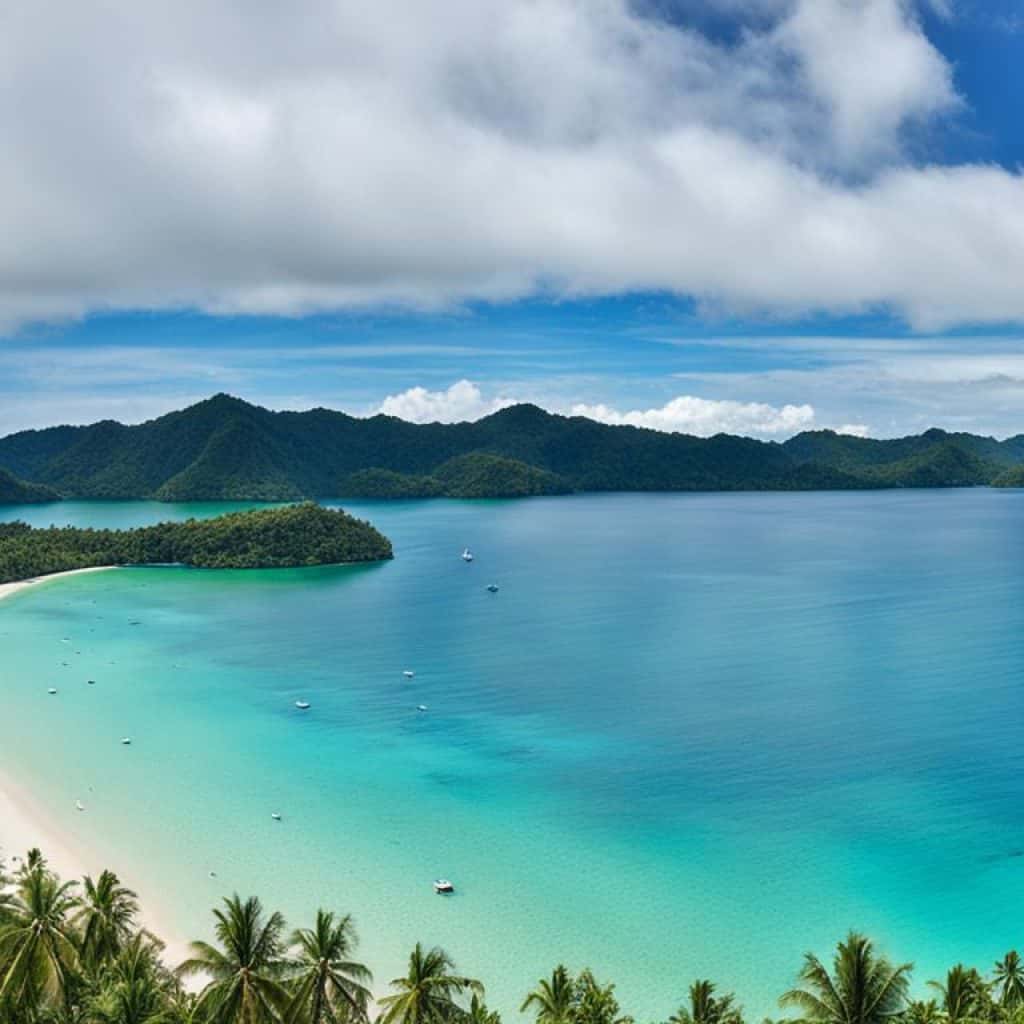
The Ati-Atihan Festival
The Ati-Atihan Festival is a cultural event held in Kalibo, Aklan, known as one of the most famous festivals in the Philippines. This vibrant celebration is a must-see for anyone visiting Boracay, offering a glimpse into the rich cultural heritage of the region.
The Ati-Atihan Festival is celebrated in honor of the Santo Niño (Infant Jesus) and features participants wearing indigenous costumes and gear. The festival is characterized by lively tribal dancing and music, creating a vibrant and joyous atmosphere that captivates both locals and tourists.
The festival’s origins can be traced back to the 13th century when the Ati people of Panay Island welcomed Malay settlers bearing an image of the Santo Niño. Today, the Ati-Atihan Festival pays homage to this cultural fusion, showcasing the unity and diversity of Aklan’s indigenous communities.
“The Ati-Atihan Festival is more than just a cultural event; it is a celebration of our identity and a testament to the resilience and vibrancy of our people.” – Local Kalibo resident
The Spirit of Unity and Merriment
During the Ati-Atihan Festival, the streets of Kalibo come alive with parades, street dances, and colorful processions. Participants paint their faces with black soot and don traditional Visayan attire, resembling the Ati people who once inhabited the region.
The festival’s infectious energy is heightened by the rhythmic beat of drums and the melodic sounds of traditional instruments like the kulintang and agong. Visitors are invited to join in the revelry, dancing along with the performers and immersing themselves in the local culture.
Experience Aklan’s Cultural Heritage
Attending the Ati-Atihan Festival provides a unique opportunity to delve into the cultural tapestry of Aklan. From witnessing the mesmerizing performances to exploring the local arts and crafts, visitors can gain a deeper appreciation for the province’s indigenous roots.
While Boracay attracts tourists with its pristine beaches, the Ati-Atihan Festival in Kalibo offers a different perspective, allowing visitors to discover the soul and spirit of Aklan. It is a chance to better understand the customs, traditions, and history that define this captivating region.
So, if you’re planning a trip to Boracay or Aklan, make sure to schedule your visit during the Ati-Atihan Festival. Immerse yourself in the vibrant colors, rhythmic beats, and contagious joy that define this cultural extravaganza. Experience the true essence of Aklan and create memories that will last a lifetime.
The Natural Beauty of Aklan
Aklan, the province where Boracay is located, is a treasure trove of natural beauty. While Boracay is renowned for its pristine white sand beaches, Aklan offers a myriad of stunning attractions that showcase the province’s diverse landscapes. Whether you’re a nature enthusiast or a beach lover, there’s something for everyone to marvel at in Aklan.
The Buruanga coast is a hidden gem with its rocky seaside, perfect for those seeking a rugged and picturesque beach experience. The Nabas area boasts a beautiful coastline that stretches as far as the eye can see, providing breathtaking views that soothe the soul.
In the municipality of Lezo, you’ll find a charming church nestled among the scenic countryside. This architectural wonder is not only a testament to the province’s religious heritage but also offers a serene escape from the hustle and bustle of city life.
But it’s not just the coastlines and stunning landmarks that make Aklan a natural playground. The province is also home to lush mangrove forests that teem with unique flora and fauna, offering an eco-tourism experience like no other. If you’re up for a hike, explore the majestic mountains of Aklan, including Mount Timbaban, which offers panoramic views that will take your breath away.
Take the time to immerse yourself in the beauty of Aklan’s natural wonders. Whether you’re exploring its rocky coastlines, meandering through the mangroves, or hiking its mountains, Aklan offers an unforgettable experience for nature lovers.
Tourism in Aklan
Tourism plays a vital role in the economy of Aklan, a province known for its breathtaking natural beauty and vibrant cultural heritage. The crown jewel of Aklan’s tourism industry is none other than Boracay, which attracts millions of visitors each year. Let’s dive into the fascinating world of Aklan tourism and explore the incredible experiences it has to offer.
Discovering Aklan’s Visitor Statistics
When it comes to tourist arrivals, Aklan has seen impressive numbers. In 2020 alone, over 2 million tourists flocked to the province, eager to experience the wonders of Boracay and beyond. These visitors generated more than 56 billion pesos in revenue, contributing significantly to the local economy.
Aklan continues to prioritize sustainable tourism, striving to strike a delicate balance between attracting visitors and preserving the province’s natural and cultural heritage. Through careful planning and implementation, Aklan aims to ensure that future generations can continue to enjoy the beauty and charm of the region.
Exploring Aklan’s Unique Offerings
Aklan offers a myriad of attractions beyond the famous beaches of Boracay. From picturesque landscapes to historical landmarks, there is something for every type of traveler. Explore the stunning Buruanga coast with its rocky shores, immerse yourself in nature at the enchanting mangroves, or marvel at the beauty of the Aklan River, the longest in the province.
For history buffs, Aklan boasts a rich heritage that dates back centuries. Visit the province’s historical sites, including the remnants of the Kedatuan of Madja-as and the landmarks that played a role in the Philippine revolution against Spanish colonization.
Accommodations in Aklan
Aklan offers a range of accommodations to suit various preferences and budgets. In Boracay, choose from beachfront resorts that pamper you with lavish amenities, boutique hotels that offer unique experiences, or cozy guesthouses that provide a more intimate setting. Other municipalities in Aklan also provide a wide selection of accommodations, ensuring that every visitor can find their perfect home away from home.
The Essence of Aklan Tourism
Aklan’s tourism industry is a driving force behind the province’s growth and development. It showcases the best of what the region has to offer, from stunning natural landscapes to vibrant cultural experiences. As more travelers discover the wonders of Aklan, the province continues to evolve, adapting to the needs of visitors while remaining dedicated to sustainable practices.
Explore the beauty of Aklan, where stunning beaches, captivating history, and warm hospitality await. Embark on an unforgettable journey through this enchanting province, and create memories that will last a lifetime.
Discovering Aklan’s Cultural Diversity
Aklan is a province in the Philippines that is known for its rich cultural diversity. Various ethnic groups contribute to the vibrant tapestry of Aklan’s heritage, including the Aklanon, Negrito (Ati), Sulod, Hiligaynon, Karay-a, and Capiznon. These groups have distinct traditions, languages, and customs that offer visitors a unique and immersive experience.
One of the most prominent indigenous tribes in Aklan is the Ati people. They have a special place in the province’s cultural heritage and their presence is celebrated through festivals and cultural events. The Ati-Atihan Festival in Kalibo, Aklan is a prime example of this, where participants don traditional costumes and gear to honor the Santo Niño (Infant Jesus).
Visitors who come to Aklan have the opportunity to learn about the fascinating traditions and customs of these different ethnic groups. It’s a chance to witness traditional dances, music, and culinary delights that showcase the diversity of Aklan’s cultural heritage. Exploring Aklan’s cultural diversity is like embarking on a journey through time and immersing oneself in the rich tapestry of Philippine history and identity.
| Ethnic Groups | Key Contributions |
|---|---|
| Aklanon | Preservation of Aklan’s ancient traditions and rituals |
| Negrito (Ati) | Celebration of Ati culture through festivals and events |
| Sulod | Promotion of Sulod heritage and cultural practices |
| Hiligaynon | Influence on Aklan’s language and artistic expressions |
| Karay-a | Preservation of the Karay-a language and traditional arts |
| Capiznon | Contribution to Capiz province’s cultural identity |
Aklan’s cultural diversity is an integral part of the province’s identity. It is a reminder of the rich history and heritage that has shaped the region over the centuries. As you explore Aklan, take the time to appreciate the beauty of its cultural tapestry and engage with the local communities to gain a deeper understanding of their unique traditions.
Aklan’s Historical Significance
Aklan, the province located in the Philippines, holds great historical significance in the region. It has a rich and diverse history that dates back to ancient times. The province was settled in the 13th century by immigrants from Borneo and became part of the Kedatuan of Madja-as.
“Aklan’s history is deeply intertwined with the arrival of Spanish explorers in the 16th century. It witnessed the struggles and triumphs of various chieftains who ruled the region, leaving behind a legacy of courage and resilience.”
During the Philippine revolution against Spanish colonization, Aklan played a vital role in the fight for independence. The province stood as a symbol of resistance and became a battleground for freedom. Today, Aklan preserves its historical landmarks and sites, which serve as a testament to its courageous past.
Aklan is home to numerous historical landmarks and sites that showcase its rich heritage. Visitors can explore iconic structures such as the Kalibo Cathedral, a beautiful Spanish-era church, and the Bakhawan Eco-Park, a mangrove forest that served as a hiding place for revolutionaries during the Philippine revolution.
Discover the historical charm of Aklan as you immerse yourself in its captivating stories and explore its well-preserved heritage spots and landmarks.
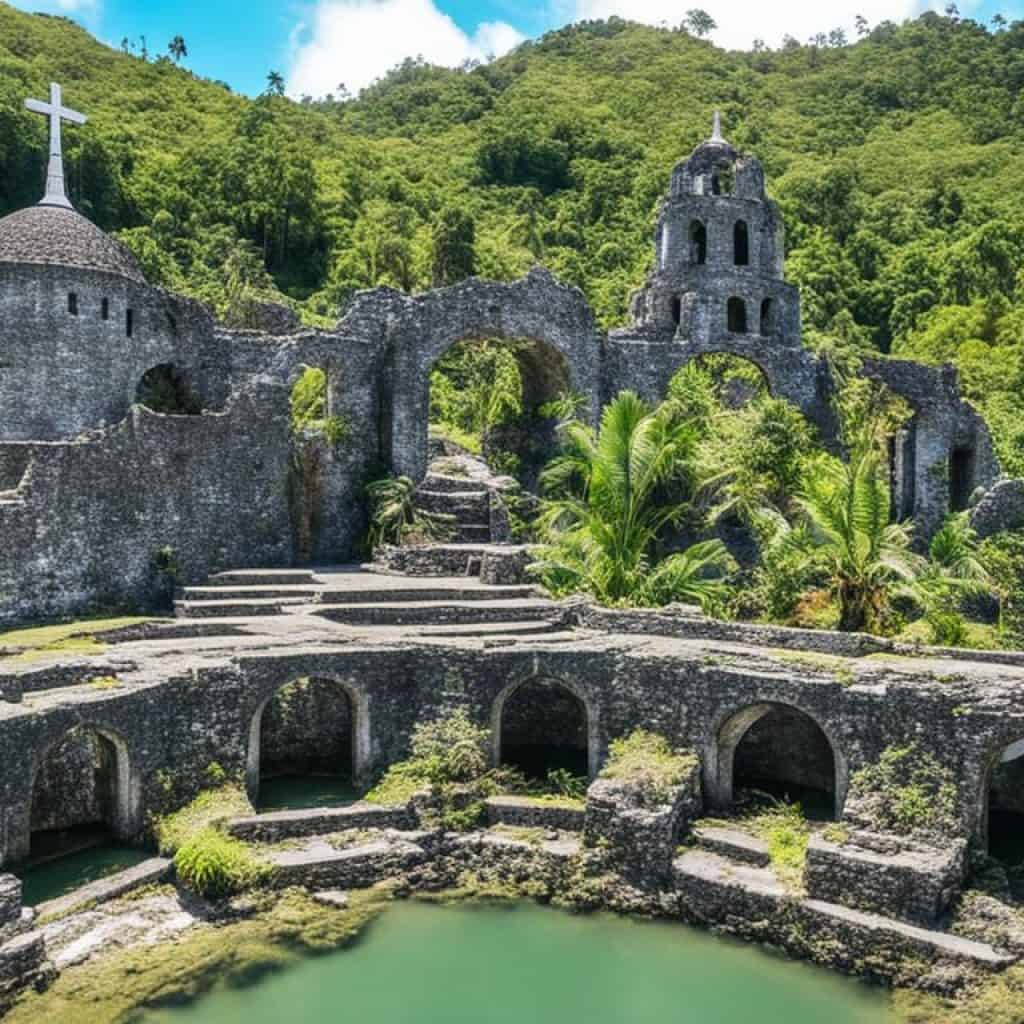
Aklan’s Historical Landmarks and Sites
| Landmark/Site | Description |
|---|---|
| Kalibo Cathedral | A Spanish-era church with intricate architectural details, it holds historical and religious significance. |
| Bakhawan Eco-Park | A mangrove forest that served as a hiding place for revolutionaries during the Philippine revolution. |
| Museum of Aklan | A museum that showcases artifacts and exhibits highlighting the province’s history and culture. |
| Huevos Beach | A site where Filipino revolutionaries escaped during the Philippine revolution, known for its scenic beauty. |
| Mamuag Hidden Falls | A picturesque waterfall nestled in the mountains, offering a serene and tranquil atmosphere. |
These historical landmarks and sites not only provide a glimpse into Aklan’s past but also serve as reminders of the sacrifices made by the people who fought for freedom. They are a testament to the province’s cultural heritage and offer visitors an opportunity to connect with its history on a deeper level.
Exploring Aklan’s Natural Wonders
Aklan, the province where Boracay is located, is a treasure trove of natural wonders waiting to be explored. From majestic mountains to frothing rivers, there is something for every nature enthusiast in Aklan.
Mount Timbaban: Breathtaking Views from Aklan’s Highest Peak
One of the highlights of Aklan’s natural landscape is Mount Timbaban, the highest peak in the province. Set against a backdrop of lush greenery, this majestic mountain offers awe-inspiring views of the surrounding landscapes. As you trek to the summit, you’ll be rewarded with panoramic vistas that will take your breath away.
The Aklan River: Nature’s Pristine Beauty
The Aklan River, the longest river in the province, is a sight to behold. Its rushing waters create a frothing appearance, adding to its wild and untamed beauty. Take a leisurely stroll along the riverbanks or simply relax by its shores, immersing yourself in nature’s tranquility.
Mangroves, Forests, and Waterfalls: Delving into Aklan’s Natural Bliss
Aklan is blessed with abundant natural attractions, including mangroves, forests, and waterfalls. Explore the enchanting mangrove forests that line the province’s coastlines, immerse yourself in the lush greenery of its forests, and discover hidden waterfalls cascading amidst untouched landscapes. These natural wonders provide excellent opportunities for eco-tourism and outdoor activities like hiking, bird-watching, and swimming.
Unleash your inner adventurer as you witness the diversity and beauty of Aklan’s natural wonders. Capture breathtaking vistas, revel in the soothing sounds of nature, and embark on unforgettable journeys through Aklan’s eco-tourism destinations.
Aklan’s Local Cuisine and Delicacies
Aklan’s local cuisine is a culinary treasure trove that reflects the province’s rich cultural heritage. Visitors have the opportunity to indulge in a variety of traditional dishes that showcase the unique flavors and ingredients of Aklan.
One must-try dish is binakol, a hearty chicken soup cooked in flavorful coconut water. This comforting soup is a staple in Aklan cuisine and is known for its delicious combination of tender chicken, aromatic herbs, and the subtle sweetness of coconut.
Another local favorite is inubarang manok, a native chicken stew that embodies the rustic flavors of Aklan. This dish is prepared by slow-cooking native chicken with a medley of spices and vegetables, resulting in a rich and savory stew that is perfect for sharing with friends and family.
Seafood lovers will delight in linapay, a mouthwatering dish made of stuffed grilled squid. The squid is filled with a tasty mixture of spices, herbs, and ground pork before being grilled to perfection. The result is a dish that is bursting with flavors and offers a delightful combination of textures.
No culinary exploration of Aklan is complete without savoring the local delicacies. One such delicacy is kinihad, a smoked fish that showcases the province’s expertise in preserving and enhancing the flavors of seafood. Another must-try delicacy is nilusak, a mashed banana dish that is both simple and satisfying, highlighting the abundance of fruits in Aklan.
Aklan’s local cuisine offers a unique blend of flavors, from the comforting warmth of soups to the delightful freshness of seafood. It’s a true reflection of the province’s culinary heritage and a testament to the creativity and skill of its people.
Exploring the local cuisine of Aklan is not only a gastronomic journey but also an opportunity to delve deeper into the province’s vibrant culture.
From flavorful soups to delectable seafood dishes and mouthwatering delicacies, Aklan’s local cuisine is a feast for the senses. Whether you’re a food enthusiast or simply curious about experiencing the flavors of the Philippines, Aklan’s culinary offerings are sure to leave you craving for more.
Getting to Aklan
Aklan, the gateway to the stunning province of Boracay, is easily accessible by various modes of transportation. Whether you prefer to travel by air or sea, Aklan offers convenient options to reach your destination.
Flight to Kalibo International Airport
If you are traveling by air, the Kalibo International Airport is your entry point to Aklan. Situated in Kalibo, the capital city of Aklan, this international airport serves as the primary hub for visitors heading to Boracay.
Several airlines operate flights to and from Kalibo, providing travelers with a range of options. Popular airlines such as Philippine Airlines, Cebu Pacific, and AirAsia offer regular flights to Kalibo from major cities in the Philippines, as well as international destinations.
Upon arrival at Kalibo International Airport, convenient transportation options are available to take you to your desired destination in Aklan, including shuttle vans, taxis, and car rentals.
Sea Travel via Ferry Services
If you prefer to travel by sea, ferry services are available from nearby islands and provinces to Aklan. These services provide an alternative and scenic route to reach your destination.
Several ferry companies operate routes to Aklan, allowing travelers to enjoy the beauty of the Philippine waters during their journey. You can find ferry services from neighboring islands such as Caticlan, Antique, and Roxas City, among others.
Transportation Infrastructure in Aklan
Aklan boasts a well-developed transportation infrastructure to cater to the needs of tourists. Once you arrive at your chosen transportation hub in Aklan, various modes of transportation are available to get around the province.
Taxis and tricycles, a popular local means of transportation, are readily available to take you to your desired destination within Aklan. You can also opt to rent a car or a motorcycle for greater convenience and flexibility during your stay.
Additionally, Aklan has an efficient public transportation system, including buses and vans, which provide reliable and affordable options for traveling between different municipalities and attractions.
Whether you choose to fly or embark on an exciting sea journey, getting to Aklan is a breeze. The province’s accessibility, combined with its breathtaking attractions, will ensure a memorable and enjoyable experience for all travelers.
Accommodations and Resorts in Aklan
Aklan offers a wide range of accommodations, from luxury resorts to budget-friendly hotels. Whether you’re planning a relaxing beach getaway or an adventure-filled vacation, Aklan has options to suit every traveler’s needs and preferences.
In the popular destination of Boracay, visitors can choose from a variety of beachfront resorts, boutique hotels, and cozy guesthouses. These accommodations provide stunning views of the pristine white sand beaches and crystal-clear waters. Whether you prefer a luxurious retreat with all-inclusive amenities or a charming boutique hotel nestled in the heart of the island, Boracay offers something for everyone.
Outside of Boracay, other municipalities in Aklan also offer a range of accommodations for tourists. From comfortable hotels to quaint bed and breakfasts, visitors can find a place to stay that fits their budget and style.
To ensure a comfortable and memorable stay in Aklan, it is recommended to book your accommodations in advance, especially during peak seasons. This will allow you to secure your preferred choice and guarantee a seamless experience.
Top Accommodations and Resorts in Aklan:
| Accommodation | Location | Description |
|---|---|---|
| Shangri-La’s Boracay Resort and Spa | Boracay | A luxury beachfront resort offering world-class amenities and breathtaking views of the ocean. |
| The Lind Boracay | Boracay | A stylish boutique hotel with modern rooms, multiple pools, and direct access to White Beach. |
| Discovery Shores Boracay | Boracay | A beachfront resort known for its exceptional service, spacious suites, and personalized experiences. |
| Eco Village Resort | Numancia | A serene eco-resort surrounded by lush greenery, offering a peaceful and sustainable retreat. |
| Villa Caemilla Beach Boutique Hotel | Boracay | A beachfront boutique hotel featuring stylish rooms, a rooftop bar, and personalized service. |
| Chillax Flashpackers Boracay | Boracay | A budget-friendly hostel designed for travelers seeking a fun and social atmosphere. |
These are just a few examples of the accommodations available in Aklan. With a wide range of options to choose from, you can find the perfect place to stay and make the most of your visit to this beautiful province.
Conclusion
In conclusion, Boracay, located in the province of Aklan, offers a breathtaking destination for travelers seeking stunning beaches and a vibrant culture. Aklan itself is a treasure trove of attractions, showcasing its rich cultural heritage and diverse natural landscapes. The rehabilitation efforts in Boracay have transformed the destination into a more sustainable and environmentally friendly place, preserving its beauty for generations to come. A visit to Aklan is an immersive experience, immersing travelers in history, natural wonders, and the warm hospitality of the local community.
From the pristine white sand beaches to the lively festivities of the Ati-Atihan Festival, Aklan has something for everyone. The province’s natural wonders, such as Mount Timbaban and the Aklan River, offer awe-inspiring sights and opportunities for outdoor exploration. Moreover, Aklan’s diverse ethnic groups contribute to its vibrant cultural tapestry, making it a melting pot of traditions and customs.
Whether you’re strolling along the shores of Boracay, delving into Aklan’s historical landmarks, or savoring the local cuisine, a visit to Aklan promises unforgettable moments. With its commitment to sustainable tourism, the province ensures that visitors can enjoy its beauty while preserving its natural and cultural heritage. Plan your journey to Aklan now and embark on an adventure filled with discovery, relaxation, and the genuine warmth of its people.
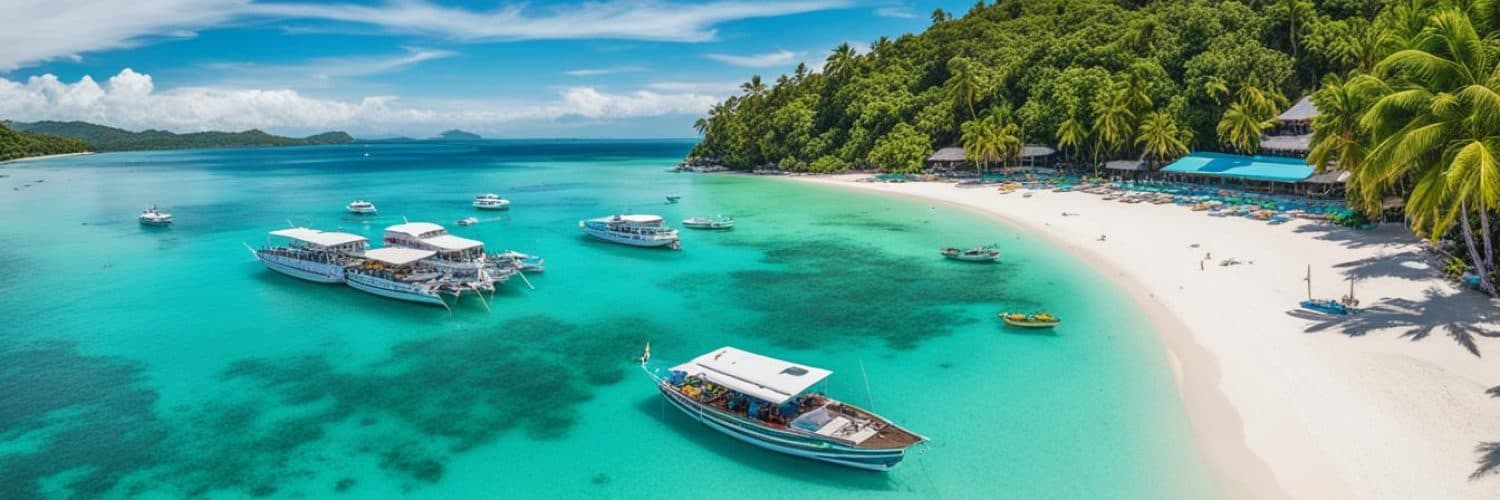
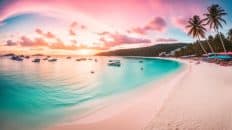
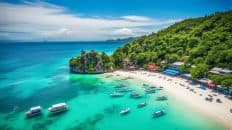
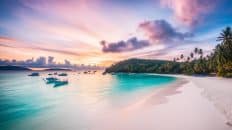














Add comment